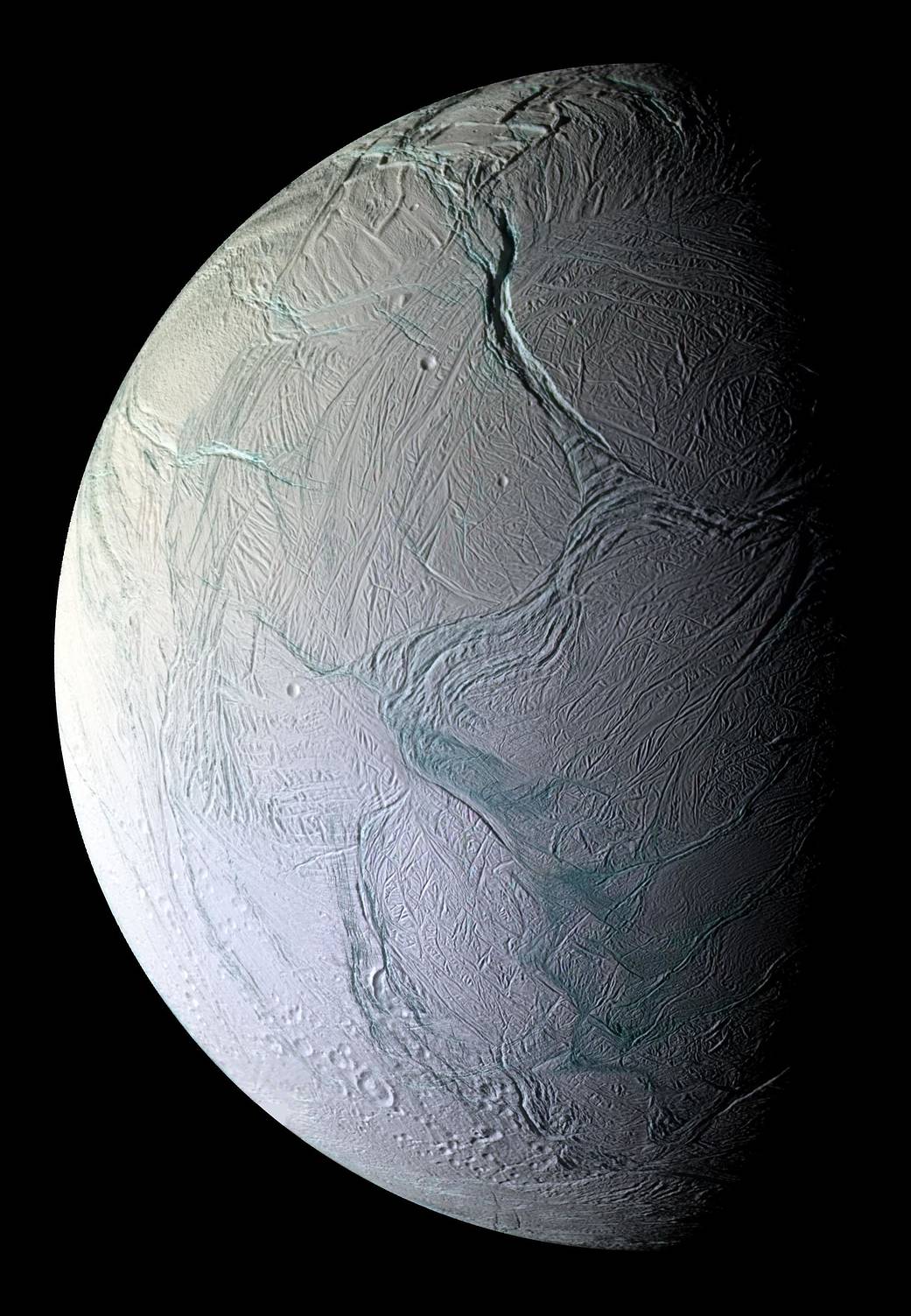
On Oct. 5, 2008, just after coming within about 15 miles of the surface of Enceladus, NASA’s Cassini captured this stunning mosaic as the spacecraft sped away from this geologically active moon of Saturn. Craters and cratered terrains are rare in this view of the southern region of the moon’s Saturn-facing hemisphere. Instead, the surface is replete with fractures, folds, and ridges-all hallmarks of remarkable tectonic activity for a relatively small world. In this enhanced-color view, regions that appear blue-green are thought to be coated with larger grains than those that appear white or gray.
Near the top, the conspicuous ridges are Ebony and Cufa Dorsae. This false-color mosaic was created from 28 images obtained at seven footprints, or pointing positions, by Cassini’s narrow-angle camera. At each footprint, four images using filters sensitive to ultraviolet, visible and infrared light (spanning wavelengths from 338 to 930 nanometers) were combined to create the individual frames. The view was acquired at a Sun-Enceladus-spacecraft, or phase, angle of 73 degrees.
Portions of the tiger stripe fractures, or sulci, are visible throughout the image. The icy moon’s famed jets emanate from at least eight distinct source regions, which lie on or near the tiger stripes. However, in this view, the most prominent feature is Labtayt Sulci, the approximately .6 mile-deep northward-trending chasm.Image Credit: NASA/JPL/Space Science Institute


























